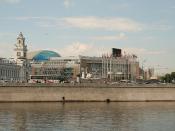'What were the functions of popular festivals, etc. in Early Modern Europe? And why did the authorities, civil and ecclesiastical seek to control or suppress them?'
In Early Modern Europe festivals were the setting for heroes and their stories, to be celebrated by the populace. They posed a change from their everyday life. In those days people lived in remembrance of one festival and in expectance of the next. Different kinds of festivals were celebrated in different ways. There were festivals that marked an individual occasion and weren't part of the festival calendar, like family festivals such as weddings and christenings. Some took place at the same time every year and were for everyone, like community festivals like the different saints' days. Pilgrimages took place all year round. Annuals festivals like Christmas and Midsummer always took place on the same day every year.
In those days the average village in Western Europe celebrated at least 17 festivals annually, not counting family occasions and saints' days.
Some festivals, such as Carnival, lasted several days or sometimes even several weeks. In the Netherlands Carnival started every year at the 11th of November (St. Martin) and culminated in a big festival of 'Dranck, pleijsier ende vrouwen' (Drink, fun and women) at the end of the Carnival period, preceding the period of Lent.
Festivals were meant to take the minds of the people off their everyday life , off the hard times and their work. Everyday life in Early Modern Europe was filled with rituals, both religious and secular. Songs and stories played an important role in their lives, although they sometimes adjusted the details of the legends and stories to fit the way they thought a certain festival should take place.
Popular culture was mixed with ecclesiastical culture in many ways. The story...


